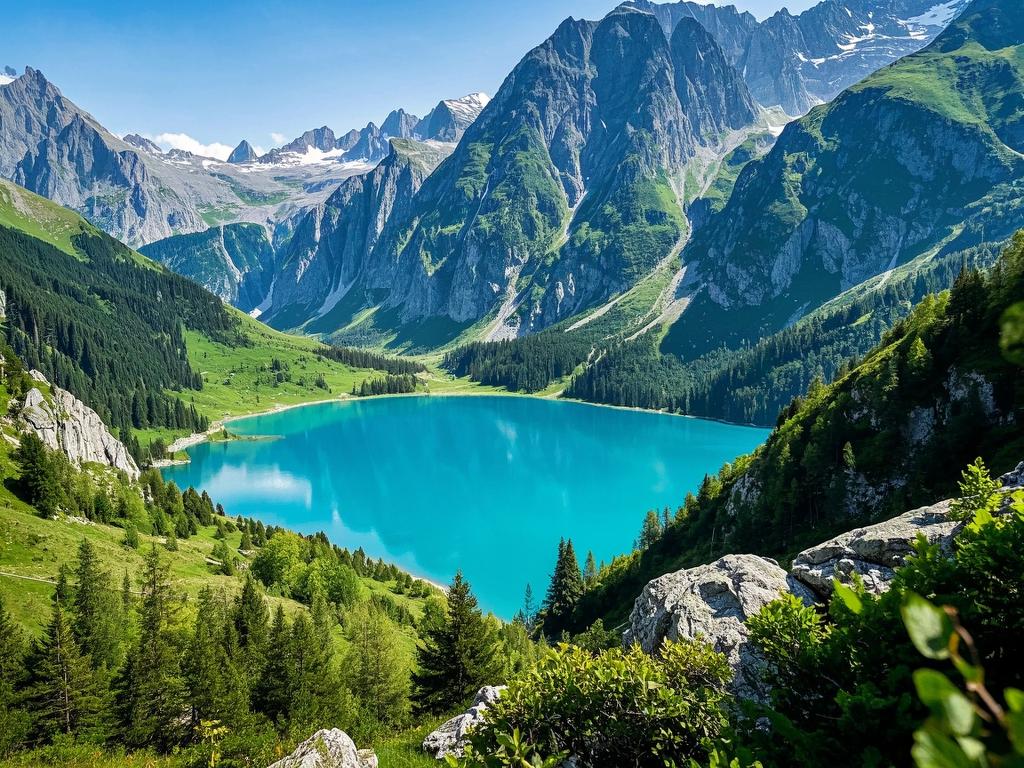
# The Serene Lakes of the Alps: Alpine Beauty Under Siege
Nestled amidst the towering peaks of the Alps, the serene lakes have long been nature's masterpieces, captivating the hearts and souls of all who behold them. These glacial wonders, with their crystal-clear waters and breathtaking vistas, are not just bodies of water; they are the very essence of Alpine beauty. But today, they stand under siege, facing a multitude of threats that could forever alter their delicate ecosystems and rob future generations of their enchanting allure.
Let's start by delving into the rich history of these Alpine lakes. For centuries, they have been the backdrop for countless legends and stories. The ancient Romans, with their penchant for grandeur, recognized the beauty of these alpine oases. They built villas and bathhouses along their shores, seeking to soak in the tranquility and splendor that the lakes offered. Fast forward to more recent times, and these lakes have become prime tourist destinations, drawing millions of visitors each year who flock to their shores to witness the magic of nature up close.
One of the most famous of these Alpine lakes is Lake Geneva. With its surface area of over 580 square kilometers, it's a massive body of water that straddles the border between Switzerland and France. Its shores are lined with charming towns like Geneva, Lausanne, and Montreux, each with its own unique character and allure. The lake has been a source of inspiration for artists, writers, and poets for centuries. Lord Byron, the renowned English poet, once said, "There is a pleasure in the pathless woods, There is a rapture on the lonely shore, There is society, where none intrudes, By the deep sea, and music in its roar: I love not man the less, but Nature more." Lake Geneva has undoubtedly been a muse for many, offering a haven of solitude and beauty that has inspired some of the world's greatest literary works.
But now, these idyllic lakes are facing a host of challenges. Climate change is one of the most significant threats. Rising temperatures are causing the glaciers that feed these lakes to melt at an alarming rate. According to recent studies, some of the Alpine glaciers have lost up to 50% of their mass in the past few decades. This influx of glacial meltwater is not only changing the water levels of the lakes but also altering their chemical composition. The increased water volume can lead to flooding in the surrounding areas, while the changing chemistry can harm the delicate balance of the aquatic ecosystems.
Another major threat is pollution. Industrial runoff, agricultural fertilizers, and sewage disposal are all taking a toll on the purity of the lake waters. The excessive nutrients from these sources are causing algal blooms, which can deplete the oxygen levels in the water, suffocating fish and other aquatic life. In some cases, the water quality has deteriorated to such an extent that swimming and other recreational activities are restricted. For example, Lake Constance, which is shared by Germany, Austria, and Switzerland, has seen a significant increase in pollution levels in recent years. The number of algal blooms has doubled in the past decade, leading to a decline in the lake's once-thriving tourism industry.
The tourism boom itself is also having an impact. The increasing number of visitors means more boats, more foot traffic, and more infrastructure development along the shores. This can lead to habitat destruction for the native flora and fauna. The construction of hotels, resorts, and roads encroaches on the natural habitats of many species, pushing them to the brink of extinction. Some of the unique plant and animal species that call the Alpine lakes home are now facing a real threat of disappearing forever.
So, what can we do to save these precious Alpine lakes? Well, first and foremost, we need to take urgent action to combat climate change. This means reducing our carbon emissions by transitioning to renewable energy sources, such as solar, wind, and hydro power. Governments around the world need to invest in sustainable infrastructure and policies that encourage energy efficiency. We, as individuals, can also play our part by making small changes in our daily lives, like using public transportation, reducing our consumption of single-use plastics, and conserving energy at home.
To tackle pollution, stricter regulations are needed for industries and agricultural practices. Industrial waste should be properly treated before being discharged into the lakes, and farmers should be encouraged to adopt more sustainable farming methods that minimize the use of fertilizers and pesticides. Additionally, better sewage treatment facilities are required to ensure that the water entering the lakes is clean.
When it comes to tourism, there needs to be a more balanced approach. Sustainable tourism initiatives should be promoted, which focus on minimizing the environmental impact while still allowing visitors to enjoy the beauty of the lakes. This could include measures like limiting the number of boats on the lakes, creating designated areas for wildlife conservation, and promoting eco-friendly accommodation options.
The serene lakes of the Alps are a treasure that belongs to all of us. We have a responsibility to protect them for future generations. If we fail to act now, we risk losing these natural wonders forever. Let's not be the generation that stands by idly as the Alpine beauty we love is destroyed. Instead, let's rise up and take the necessary steps to safeguard these precious lakes and ensure that they continue to enchant and inspire for centuries to come.
So, what are your thoughts on this? Do you have any memories of visiting these Alpine lakes? How do you think we can make a real difference in protecting them? Share your ideas in the comments below!

